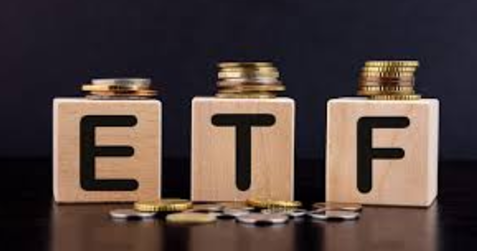Record ETF Growth: What Caused It and What to Expect?
Fady Nakhla
Staff Writer
Introduction
ETF inflows are projected to exceed $1 trillion as 2024 comes to a close – an unprecedented number in comparison to 2023’s $600 billion inflow. ETFs have been a valuable tool to investors, 65% of investors agree that ETFs have improved the overall performance of their portfolio, according to an ETF impact survey by State Street Global advisors. The rising popularity of ETFs is attributed to flexibility, cost-efficiency, and diverse offerings.
ETFs are mutual funds that trade like stocks, offering the ability to track indices, sectors, or asset classes while providing diversification across the sector. They can represent a variety of assets, including commodities, bonds, currencies, equities, or a combination. ETFs generally offer tax advantages compared to mutual funds and carry lower expense ratios even if they are actively managed.
Why have the inflows increased?
Post Election Optimism
Historically, regardless of the presidential outcome, higher investor optimism follows election results leading to a period of heightened growth in the economy and stock market. In this cycle, ETFs that focus on U.S. equities, such as those tracking the S&P 500 and Nasdaq-100, have seen substantial growth. Statista reports that the ETF seeing the highest number of inflows is Vanguard’s S&P 500 ETF at $42 billion as of September 2024.
President Trump’s campaign promises also heightened the effects of this phenomenon. A campaign centered around reducing inflation, stabilizing interest rates, lowering taxes, and promoting strong corporate earnings created positive market anticipation. In the wake of Trump’s victory, ETFs saw $53 billion in inflows, significantly higher than post Biden election that saw a $16 billion inflow. However, it is important to recognize that much of this growth cannot be attributed to Trump alone. The 2024 calendar year has been under the Biden-Harris economic policies, which led to a 22% increase in Q3 ETF inflows compared to the same period last year.
Tax Planning and Efficiency
Investors tend to switch from mutual funds to ETFs as the year comes to an end. This is largely in an effort to avoid the mutual fund payouts that trigger tax liabilities. ETFs don’t have such liabilities because of their in-kind redemption process. In this process, shares are created or redeemed when baskets of underlying securities are exchanged with the ETF issuer. This avoids capital gains tax since these transactions happen in shares and not cash.
A General Shift
The general shift away from money markets and mutual funds is another contributor. Investors are turning to ETFs to escape higher tax burdens. Additionally, the ease of access, lower fees, and transparency of ETFs have attracted new retail and institutional investors alike.
Implications of the Inflows
Competition Among ETF Issuers
As is typical in any market, a growth in popularity usually leads to a growth in competition between suppliers. The ETF market is no different, increased competition between issuers can be expected as issuers lower expense ratios to attract investors. Investors will benefit from the fee compression, but issuers profit margins will decrease as competition increases. Competition also spurs innovation. In the ETF market, innovation can be seen with the creation of thematic ETFs that target a specific trend or sector. In 2024, many new thematic ETFs have been created due to heightened competition such as Blackrocks iShare BTC ETF and Apollo’s and State Street’s partenered Private Credit ETF.
Increased Liquidity and Market Stability
ETFs are very liquid. A shift toward ETF trading leads to higher liquidity in financial markets, conversely this means less market volatility. ETFs enable smoother trading and more efficient price discovery of securities. This phenomenon is particularly present in less liquid markets and emerging markets.
Market Concentration Risks
This is not to say that the increase in ETFs is all positive. Record inflows also bring challenges. ETFs tracking major indices, such as the S&P 500, hold large amounts of shares in large-cap companies like Microsoft and Apple. This concentration can disproportionately drive up the prices of these stocks, potentially distorting valuations. Additionally, underrepresented sectors may struggle to attract capital as large ETFs dominate certain market segments.
Furthermore, as the more popular ETFs attract momentum, smaller markets become underrepresented. Capital might be spread disproportionately throughout the market as underrepresented sectors are overshadowed by large ETFs concentrated in specific sectors. Such market concentration can lead in extreme economic loss when concentrated markets decline.
Liquidity Mismatches
ETFs can cause major liquidity mismatches as well. When many investors try to sell shares all at once, the firm then must sell their underlying securities to generate cash quickly. This can cause major price fluctuation in their securities. Such a phenomenon especially poses a risk to ETFs that deal with illiquid assets.
For example, bond ETFs like the iShares iBoxx $ High Yield Corporate Bond ETF (HYG) faced significant challenges during the 2008 financial crisis. The underlying bonds became illiquid, causing the ETF to trade at a steep discount to its net asset value (NAV).
Conclusion
ETF inflows are a major signifier of investor confidence. Record inflows pose many economic benefits. Chief among these benefits are increased tax efficiency, increased liquidity, and a more accessible and stable investment landscape. However, this is not to say that ETFs do not come with risks. Having large amounts of money invested into a few specific sectors leads to heightened market concentration. This is especially concerning when realizing that ETFs have a heightened risk for liquidity mismatches.
ETFs have many pros and cons, regardless, the current economic environment is favorable. The United States is currently facing a period of unprecedented growth, regardless, investors should remain aware of ETFs’ possible risks
Contact Fady at Fady.Nakhla@student.shu.edu

